What I’ve Been Playing (Q1) 2023
Thoughts & impressions on the games I played/finished during the first quarter of 2023 (January through March).
 UnexpectedGames
UnexpectedGames
Just a friendly bear who works in financial reporting that would rather be playing, writing or talking about video games. https://twitch.tv/unexpectedenemy
Thoughts & impressions on the games I played/finished during the first quarter of 2023 (January through March).

I’m nearly two months late to posting this, but despite surviving another wild busy season at work, getting and recovering from COVID for the first time and having left elbow surgery to fix a pinched nerve I’ve been dealing with for nearly a year, I somehow managed to finish 19 games during the first quarter of 2023.


Super Kiwi 64, developed by Siactro, is a low-poly, N64-inspired 3D platformer. Similar to the developer’s previous games, Macbat 64, Regina & Mac and to a lesser extent, Toree 3D and Toree 2, Super Kiwi 64 is a collect-a-thon through and through. It wears its Banjo-Kazooie influence very closely on its sleeve. Each of the 4 themed worlds contains two levels which have 6 gems to collect based on completing all of the stage’s objectives. Think of the gems as Power Stars or Jigsaw Pieces from Super Mario 64 and Banjo-Kazooie, respectively. The stage objectives range from collecting all of the golden cogs in the level to gliding through a certain amount of rings, for example. Some of the gems are hidden in plain sight or at the end of a simple platforming sequence while others might require solving a simple puzzle to acquire.

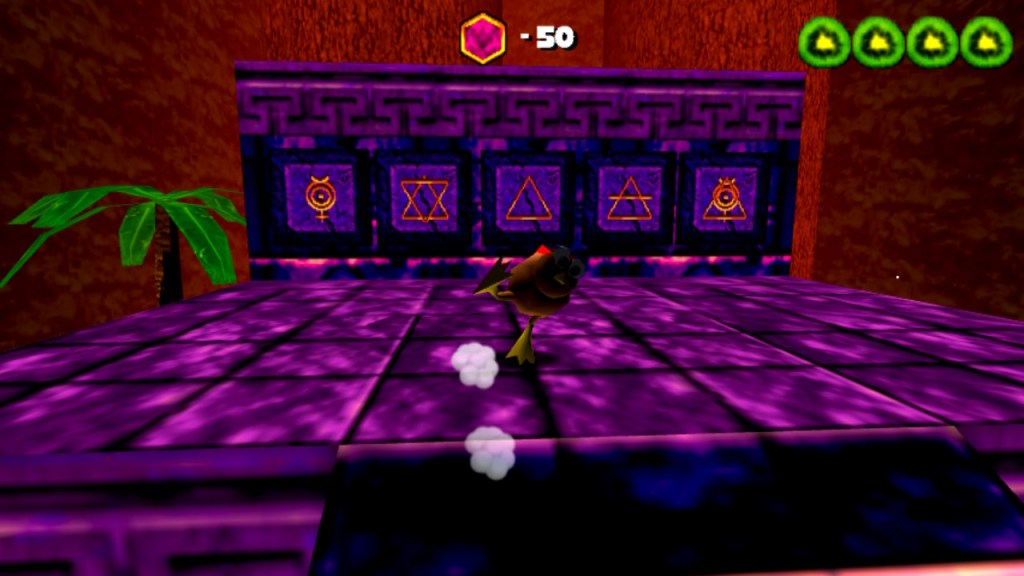

One of the most important things about 3D platformers is if it feels good to control your character and Super Kiwi 64 nails it. Kiwi can run, jump, and glide with their little backpack. You can also dash and bury your beak into certain walls which allows you to climb higher and perform wall jumps, although it’s rarely required in order to make progress. I completed the game at 100% in like an hour and it was perfect. I honestly have nothing negative to say about the game outside of the fact that I wish it were longer and had a bit more variety. If I had the knowhow or willingness to make a video game outside of the various RPG Maker projects I’ve toyed around with over the years, Super Kiwi 64 is the type of game I’d like to think I would make if I were just starting out as a fledgling game designer.
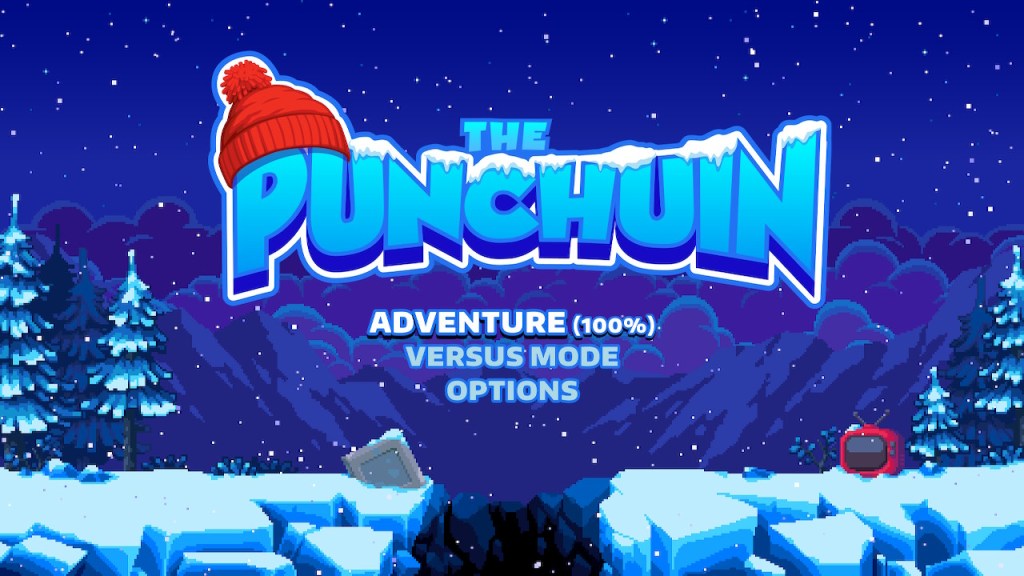
The Punchuin, developed by Shin’en Multimedia, is a 2D puzzle-platformer that takes elements of Tetris and Mr. Driller and gives you a glove. Shin’en has been making games since the early 2000s including titles like Nanostray, The Touryst (my personal favorite game of theirs), FAST Racing, Art of Balance and more. They are an extremely competent developer who has primarily made games for Nintendo platforms, although some of their more recent games have found their way to PlayStation/Microsoft platforms. Their games almost always make use of their hardware of choice, in terms of performance and visuals, they’re some of the best programmers in the business. In The Punchuin, you play as a cute penguin with a red beanie who’s descending a mountain in search of its treasures. The game actually stats very similarly to Downwell as you control your character on the title screen and jump down a pit to begin playing. From there, you’re presented with a Super Mario Bros. 3-style map with a shop to purchase upgrades, branching paths, boss fights, mini-games and secret levels. The soundtrack, composed by Francisco Cerda, is incredible too.



The Punchuin is a relatively easy game to pick-up and play, but it’s not without its nuances. If there’s a block/wall behind you and you punch the block in front of you, you essentially pull it towards you, replacing yourself with the block’s position. If there’s more than one space behind you and you punch a block, it’ll move it forward three spaces. The goal of each level is to clear groups of three blocks of the same color; purple, green and red. You can punch blocks mid-air to position them on a stack if you’re quick enough and you can even launch blocks into pits if they’re not needed. There are also power-up items like a lightning bolt which destroys any block in its path once it’s hit. Ice blocks and blocks with coins in them fill the screen in addition to the colored blocks, too. The coins can be collected to buy additional power-ups such as a flaming fist and a double jump for the penguin. The economy works well and if you purchase the upgrade that doubles the value of each coin collected, you’ll have everything unlocked by the end of the game, if you’re playing thoroughly. I completed the game at 100% and enjoyed every second of it. If I played The Punchuin when it released late last year, it would have secured a spot on my top 10 games of 2022.
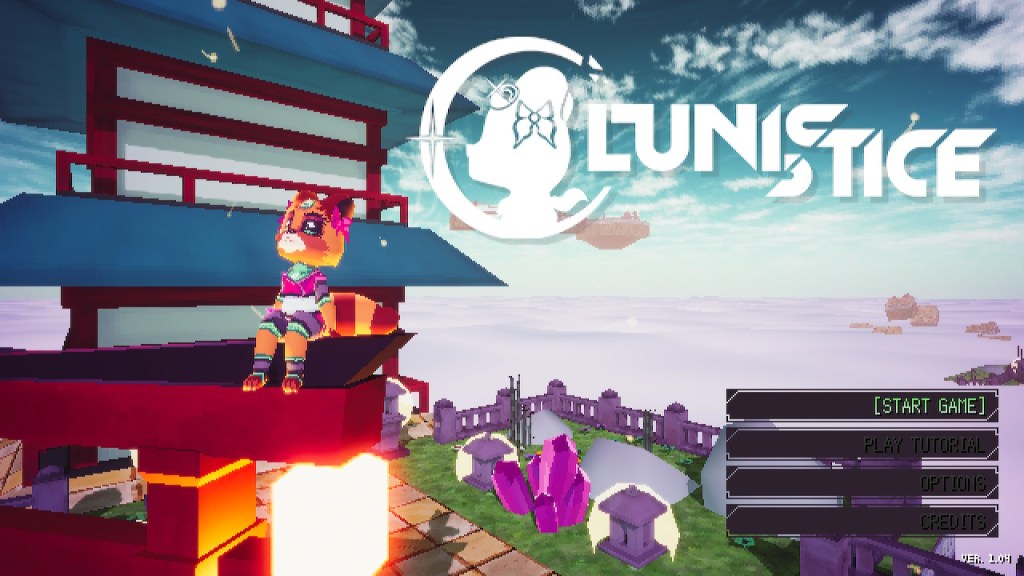
Lunistice, developed by A Grumpy Fox, is a 3D precision platformer with a PS1/Sega Saturn era aesthetic. You play as Hana, a fox girl who is apparently trapped in a simulation of sorts, but I’m not entirely sure that’s the story here. The plot feels like an afterthought as hidden text files that explain the game’s story are locked away behind completing stages at 100%. Each themed world has a certain amount of paper cranes to collect in addition to letters that spell out the main character’s name, Hana. Once you collect all 4 letters, an optional path opens-up behind the goal of each stage. Each world consists of two levels and if you collect all of the letters and complete the optional path, you’ll find a key. In the second level, if you accomplish the same goals, instead of a key there will be a text file that provides some additional lore.
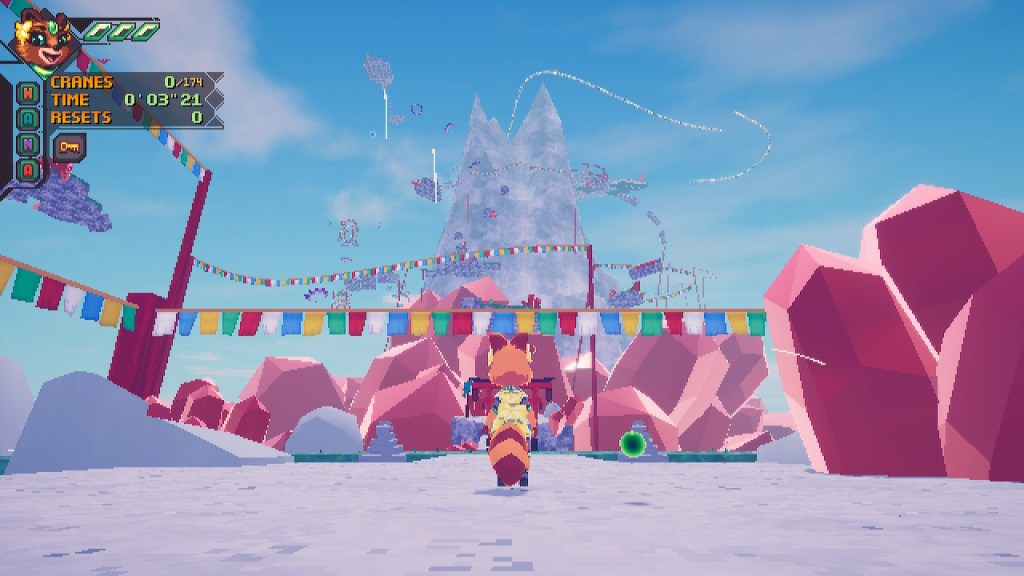


Even with the additional world-building found in these text files, I couldn’t quite tell you what was happening in the story. Regardless, I generally liked how the game controlled but the levels were maybe a bit too long for my liking. It feels good to spin and knock enemies around, but the combat is definitely an afterthought. The levels are nicely themed with a variety of visual styles backgrounds. The game just has a chunky, colorful polygonal look to it that I found appealing. The soundtrack fits the aesthetic as well, but there’s nothing I would listen to outside of the game and I’m not sure what I’d compare it to. S-Ranking the game was relatively fair too, considering you can do the “no death” and “all paper cranes collected” objectives on separate runs. The game will take your best record from each category when calculating/averaging your final result so you don’t have to do both in a single run. I completed the game at 100% with Hana and saw the true ending, but there are unlockable characters, if you felt so inclined to complete the game again. I’m good for now though.
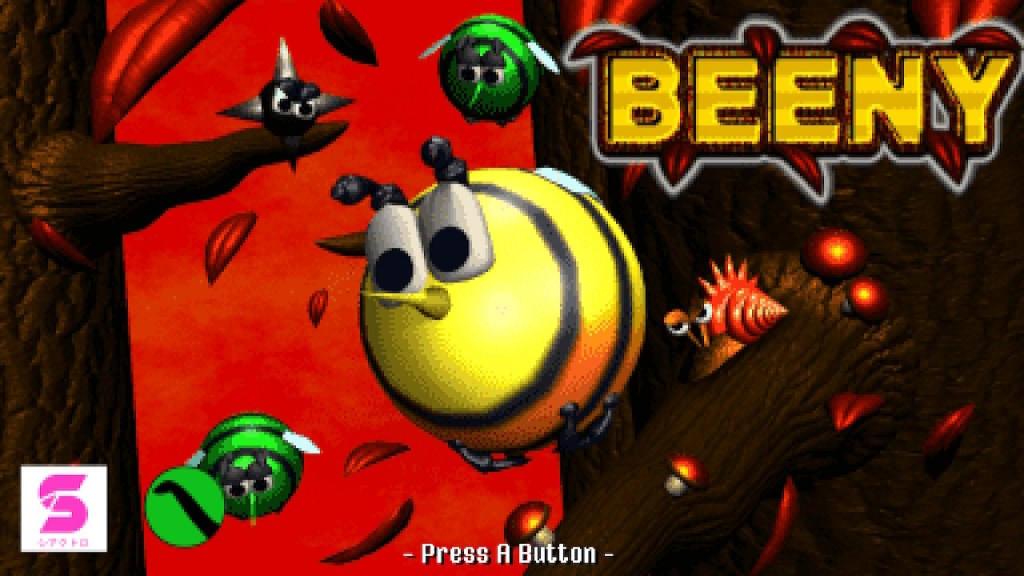
Beeny, developed by Siactro, is a 2D platformer that looks like a lost Donkey Kong Country (DKC) prototype from Rare. Beeny feels like a tech demo/proof of concept, but it’s one I would have gladly taken more of. The stages are extremely short and your goal is to simply make your way up trees to grab honey so you can build a raft. The level design is mostly the same throughout its short stay, but the developer does a decent job of throwing new ideas at you every other level. In one stage, for example, there are tree branches that have ants crawling on them, which act as a conveyor belt, slowing your movement as you ascend. The enemies are mostly used as platforms to make your way upward, too. I would also be remiss if I didn’t mention that there was a demo for their next game, Super Kiwi 64, included within the game when you beat it. For whatever reason, the developer seems to be making a Siactro-universe with crossovers, cameos and loose connections to their other games and I’m completely here for it! The music is also rad and evocative of David Wise’s compositions.


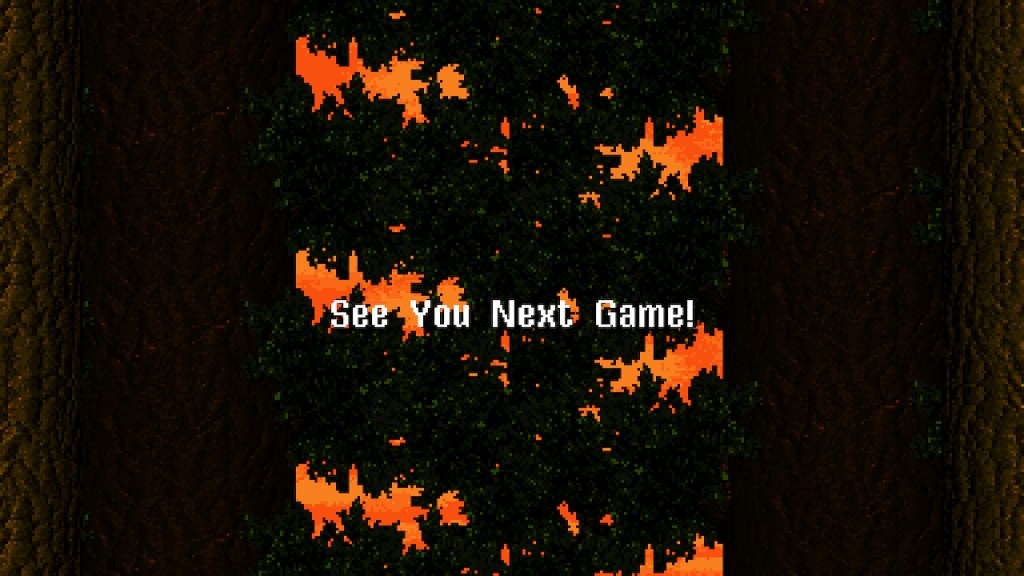
If I had the tools, willpower and knowledge to make games outside of tinkering with RPG Maker ideas (I used to create pretty sick dungeons with my brother haha), Siactro’s games would be something I’d shoot for initially. Games like Beeny and Super Kiwi 64 is where I would like to start and ultimately I would strive to make something as special as Lil Gator Game (more on that one later…). All of these indie developers are making me want to push beyond my wannabe game developer, armchair analysis self and actually create something. I completed the game at 100% with everything collected and all of the time trials completed. The entire experience lasted about an hour or two, but I definitely wanted more after the credits rolled. I also streamed almost the entirety of the game, archived here on my YouTube channel, if you feel so inclined.

The Callisto Protocol, developed by Striking Distance Studio, is the spiritual successor to EA’s very own Dead Space (which also got a remake at the end of January). The Callisto Protocol is an over-the-shoulder, 3rd-person shooter that’s unfortunately living in a post-RE4 world. You play as Jacob, an extremely uninteresting protagonist who pilots a cargo ship, transporting goods between two moons, I believe? Shit hits the fan on one of his last jobs and he finds himself as a prisoner wrapped up in a larger conspiracy on one of the moons. The story is similar to the plot from Dead Space and the reveal/twist near the end of the game that sort of separates it from the former game didn’t make it any more interesting, unfortunately. I do think the character models look incredible, the mocap is excellent and although the script isn’t great, the performances are good. I think the prison environment leaves a little to be desired, however. The game looks phenomenal in some shots, especially with the lighting, but most of the game’s environment feels comprised of shiny, metallic corridors and same-y-looking rooms.


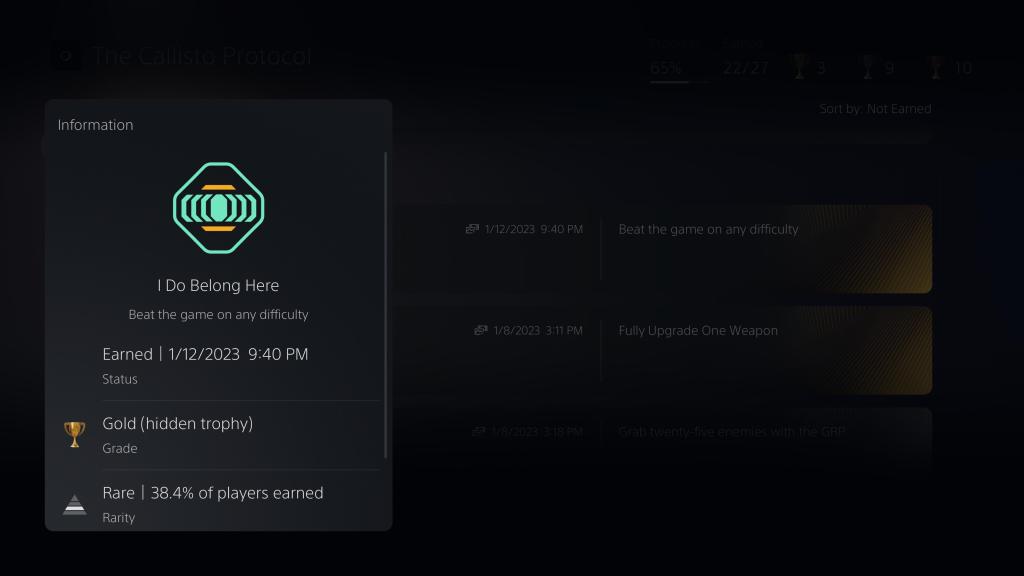
The Punch-Out-like melee combat, while feels good and provides some nice impact/feedback, can unfortunately be abused. Initially, I was under the impression that you had to time your dodges with the right analog stick when an enemy attacks. You can indefinitely dodge by holding left/right on the right analog stick, however. I do believe you have to always change it up (from left to right and vice versa), but that’s all there is to it. When I faced off against the same mini-boss for the third(?) time, I basically stood still and dodged their attacks until I took them down (I streamed and archived the moment here at 1:43:45). It was such an unrewarding encounter, which is something I can say for the majority of the game. The “transforming” monsters, which was stressed as something unique leading up to the game’s release, was a really disappointing aspect of the game, too. From my understanding, when you shoot at enemies, they have a chance to mutate unless you target the area of the monster that’s mutating. If they do mutate, they just become more aggressive, take longer to kill and do more damage to you. There’s really nothing interesting about mutated monsters other than what feels like boosted enemy health and damage output.
Although this feature has been patched since the time of writing this, I’m not sure how you release a post-RE4 style, 3rd-person shooter game without new game+ options or a chapter select at the very least. Even the first Dead Space had new game+ right out of the gate including the 2023 remake! The Callisto Protocol is a very linear game but when it does open up and paths diverge, the optional paths end up feeling like the critical path and vice versa. More often than not, you’ll find yourself venturing down a hallway thinking it’s going to lead to an optional chest filled with goodies and instead the game auto-saves and locks you out of the previous area. There’s also achievements/trophies tied to finding all of the audio files in the game, so good luck discovering all of the secrets on your own, unless you’re manual saving/reloading every chapter or following a guide. I completed the game once on Normal and although the game has had some updates, patches and additional content since I played through it, I don’t feel compelled to revisit the game anytime soon now that the Dead Space and Resident Evil 4 remakes are out.
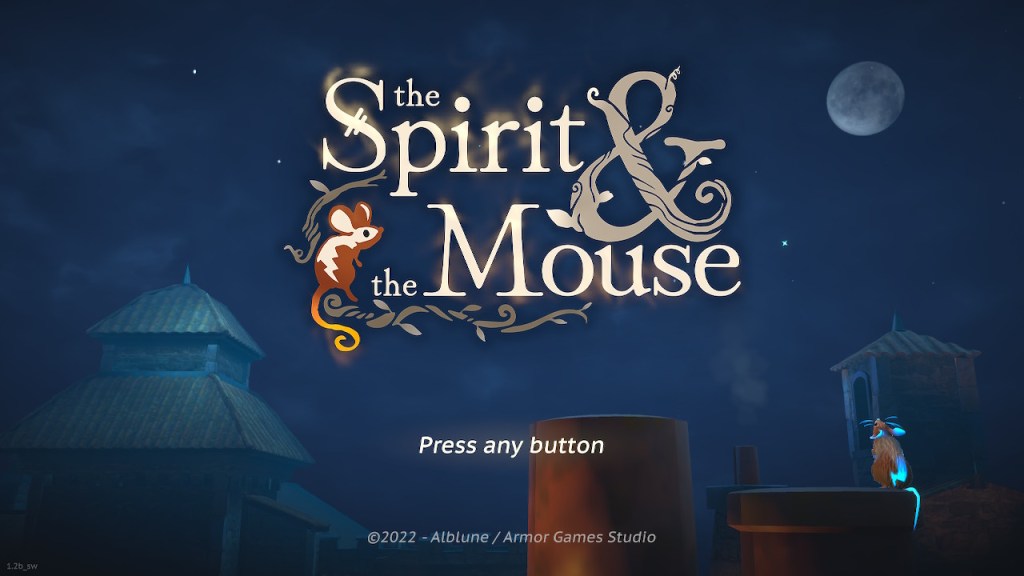
The Spirit and the Mouse, developed by Alblune, is a cozy adventure game where you play as a mouse who’s goal is to help people from a quaint French village with their problems. A lightning storm has caused a power outage and it’s your job as an electrically-charged mouse to team up with a “Guardian Spirit” (who caused the storm) to help restore the villager’s happiness. The Spirit and the Mouse is a really compact adventure that doesn’t overstay its welcome. The town you explore is divided into a handful of districts each with their own set of objectives/collectables. When you’re not exploring all of the town’s nooks & crannies as the mouse, you’ll spend most of the time chasing down animated sparks known as “Kibblins” so that they can fix power generators. These little balls of lightning task the player with mini-game-like objectives before they can be collected. In one instance, you’ll have to find a bunch of sparks who are playing hide and seek and in another scenario, you’ll have to chase down a Kibblin who runs really fast. There’s a decent amount of variety when it comes to collecting the Kibblins and the game rarely, if ever, repeats an idea.
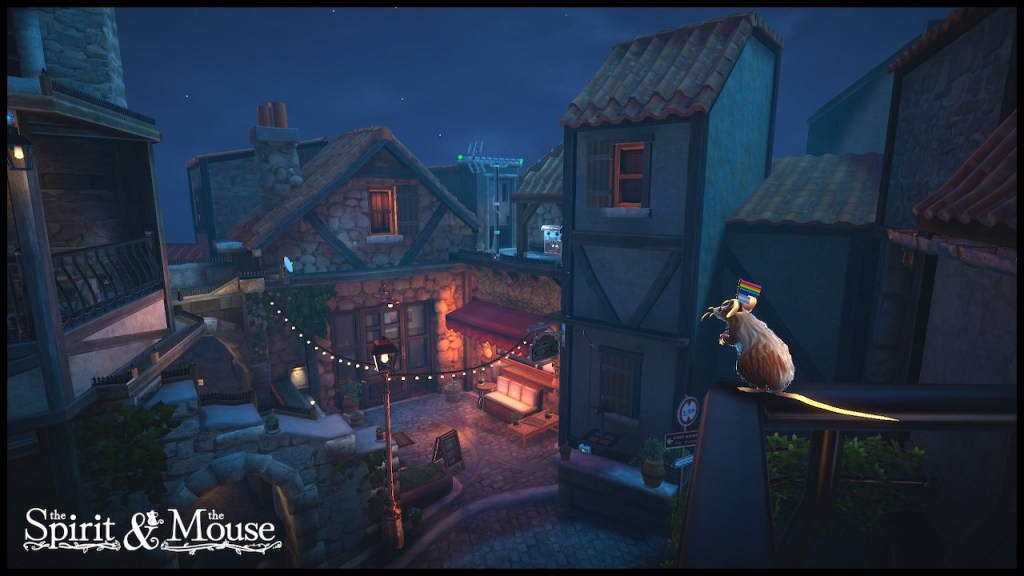


The game, at times, feels like something Nintendo would have made internally. There’s shades of Chibi-Robo and even the 3D Zelda games, with its automatic/contextualized jumping and platforming. Even the way your Guardian Spirits speaks to you, the text boxes and sound effects, it feels like you’re talking to Navi at times from the 3D Zelda titles. The Spirit and the Mouse was such a delightful, feel-good experience, I’m honestly not sure what I would change, if anything. It’s nearly perfect outside of some performance issues on the Switch. I couldn’t stop playing this game once it clicked and I feel bad that it was probably overlooked next to Stray last year, all things considered. If you like adventure games with simple puzzles, fun collectables and platforming (similar to the 3D Zelda games), you should probably play this game. I completed the game at 100%, collected all of the lightbulbs and unlocked the “white fur” skin for my cute little mouse. I can’t wait to see what these developers do next.

Lil Gator Game, developed by Mega Wobble, is a feel-good adventure about getting older while reconciling with your youth. You play as a little gator who wants to “play pretend” with his older sister, just like they used to do when they were both kids. The sister, who’s now in college, no longer wants to play “kid’s games”, however, so her brother tries to change her mind by turning the island where you play into one big, real-life game. The gator asks his friends, for example, to set-up cardboard cutouts that act like enemies. As you “defeat” the monsters on the island (which don’t fight back, because they are inanimate objects), you’re rewarded with scrap which can be used to purchase cosmetic items. The game is littered with live action role-playing (LARP) ideas and it’s all wrapped-up in an endearing package.

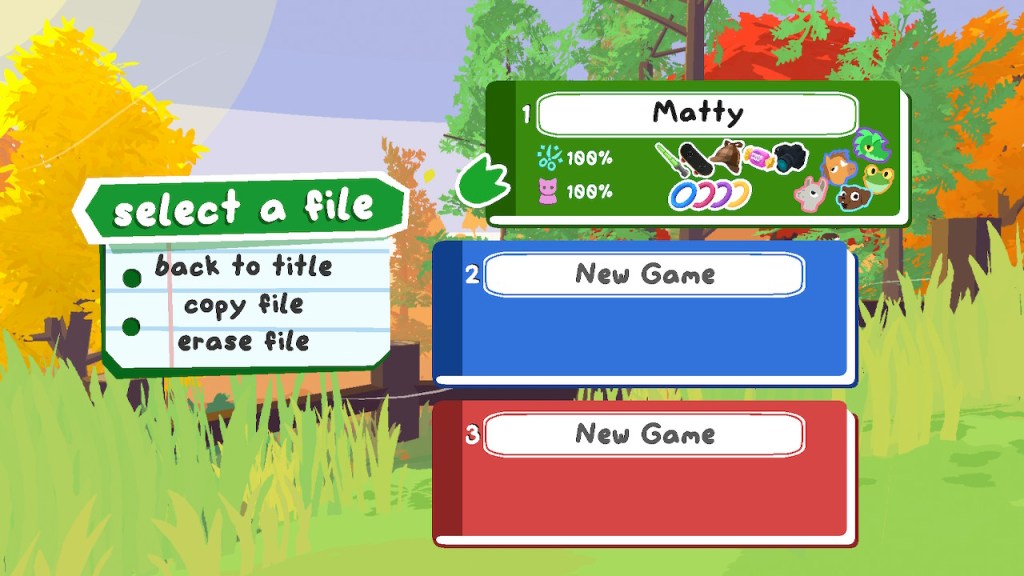

Lil Gator Game is nearly a perfect game. If I would have played it last year (it was a December release that I just didn’t make time for), it probably would have been on my top 10 list for 2022. I said the same thing about A Short Hike, but Lil Gator Game also feels like someone took the opening hours of The Legend of Zelda: The Wind Waker and made an entire game out of it; Outset Island: The Game. The game even has Suikoden-like base-building where you recruit people from all over the island to build what is essentially a backyard fort (to impress your sister, of course). You complete objectives/tasks for these non-playable characters (NPCs) and they all have different backgrounds and personalities. The writing is also great and the font and dialogue bubbles are appropriately stylized. I completed the game at 100% and it was one of my favorite experiences in a long time. It’s the type of game I would love to make if I had the knowledge, willpower and tools to create something.
Post-Game Completion Spoilers: As I mentioned above, there are cardboard cutouts scattered around each island which represent the game’s enemies. When you destroy them, you get scrap which can be used to purchase cosmetics and such. There’s a finite amount of cardboard cutouts in the game but as you’re playing, there’s no way to track how many you’ve destroyed. After you beat the game, not only does your save file show a percentage now for how many NPCs you’ve recruited and how many cardboard cutouts you’ve destroyed, they give you in-game tools to find everything you may have missed so you don’t have to resort to a guide. I won’t spoil how it works, but it’s cleverly implemented and made completing the game at 100% far more enjoyable than I was expecting it to be. Post-Game Completion Spoilers End.

Vengeful Guardian: Moonrider, developed by Joymasher, is a 2D retro-inspired action-platformer, the “Cyber Shadow” of 2023; Vengeful Guardian: Moonrider (a name that’s impossible to remember), is like if Shinobi III: Return of the Ninja Master (specifically) collided with Mega Man X. I try my best to stay away from saying things like “game is like X game” or whatever combination of “game-like”, but it’s truly one of the best descriptors I could use. Moonrider looks, feels and sounds like a Sega Genesis game, but with some of that Blue Bomber essence thrown in for good measure.
While I was born and bread on games like this, it has some modern sensibilities and options that make the game relatively fair. Hidden away in each stage are Power Modules which grant the player some passive abilities. There are two chips, for example, that slowly restores your HP and MP. There is, however, a module that kills the player in one hit. I completed the prologue stage with this chip and outside of a PSN trophy for completing a stage without getting hit, there’s no other reward other than personal satisfaction and bragging rights.
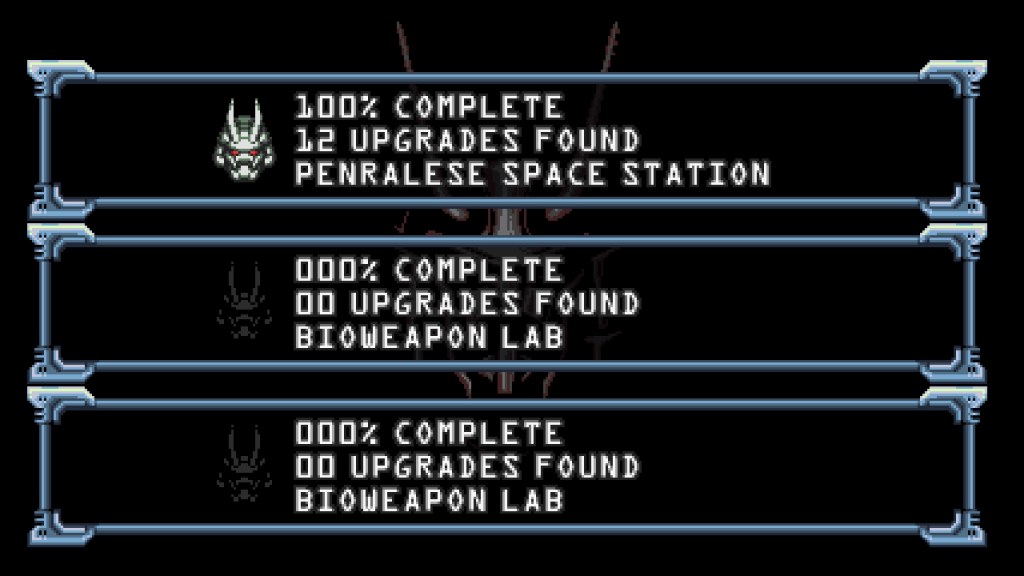
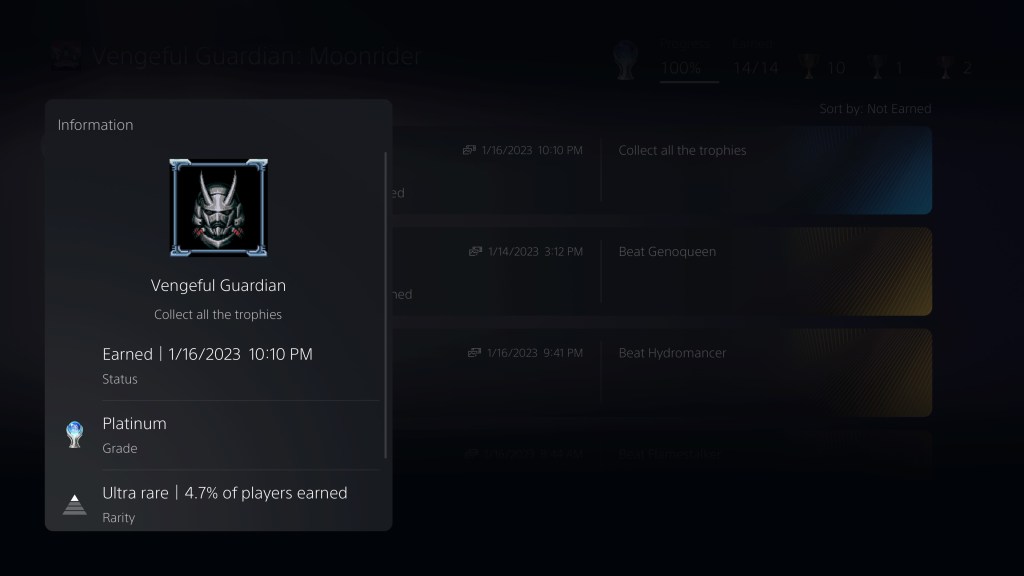

Moonrider has a map select screen where you choose your boss order, you can wall-kick up walls, dash by double tapping the right directional pad, and bosses, when defeated, give you their ability with a demo attraction video of your character demonstrating said weapon, just like in Mega Man. Stages are relatively short with distinct themes, unique hazards, decent enemy variety and good checkpoints. I was surprised with how approachable and “easy” the game was to S-Rank/100%, however. While I’m no stranger to these types of games, Moonrider gives players plenty of options to curve the difficulty. There are upgrade chips to discover in each level, most of which grant the player passive abilities, such as restoring health when enemies are killed or even reviving the player upon death. You can equip two at a time and while the best chips reduce your total ranking opportunities, there’s no real incentive to S-Rank a stage outside of PSN trophies and bragging rights.
Moonrider is cool but outside of equipping the 1-hit kill chip to make the game extremely hard, the base game is pretty easy and the final level or so feels a little rushed and disappointing. It’s still a rad game though and it will likely make my honorable mentions this year at the very least. I completed the game at 100% with the Platinum trophy earned.
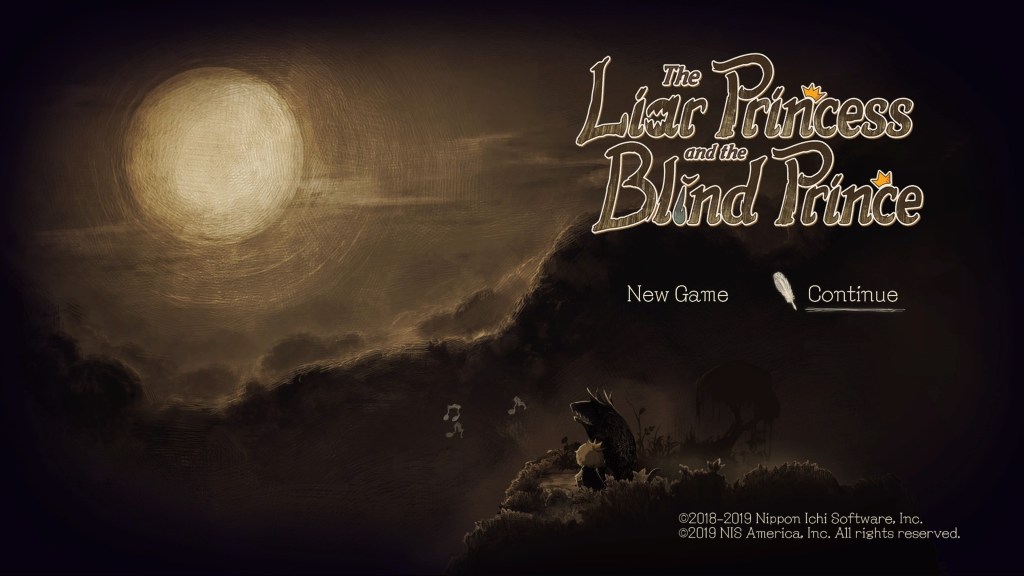
The Liar Princess and the Blind Prince, developed by Nippon Ichi Software, is a 2D-puzzle platformer about, as the title suggests, a princess who lies and a prince that cannot see. I bought The Liar Princess and the Blind Prince at launch back in 2019 and it’s been sealed on my shelf for years. At the start of each year, I like to start a ton of random games I’ve been meaning to play, so January ends up being a mix of games I’ll either commit to or drop halfway through the year. I liken it to throwing darts at a board and seeing what sticks. I always liked the look of this game, but for whatever reason, I could never get myself to start it. I decided to start it the other night and I’ve fallen in love with the game. The Liar Princess and the Blind Prince is a simple 2D puzzle-platformer, reminiscent of Dokuro on the PlayStation Vita. It’s got a nice storybook art style/presentation and a great soundtrack, too. I have no idea who exactly developed this game nor am I familiar with the composer (I haven’t looked them up yet), but it’s really scratching an itch I didn’t know I needed right now.

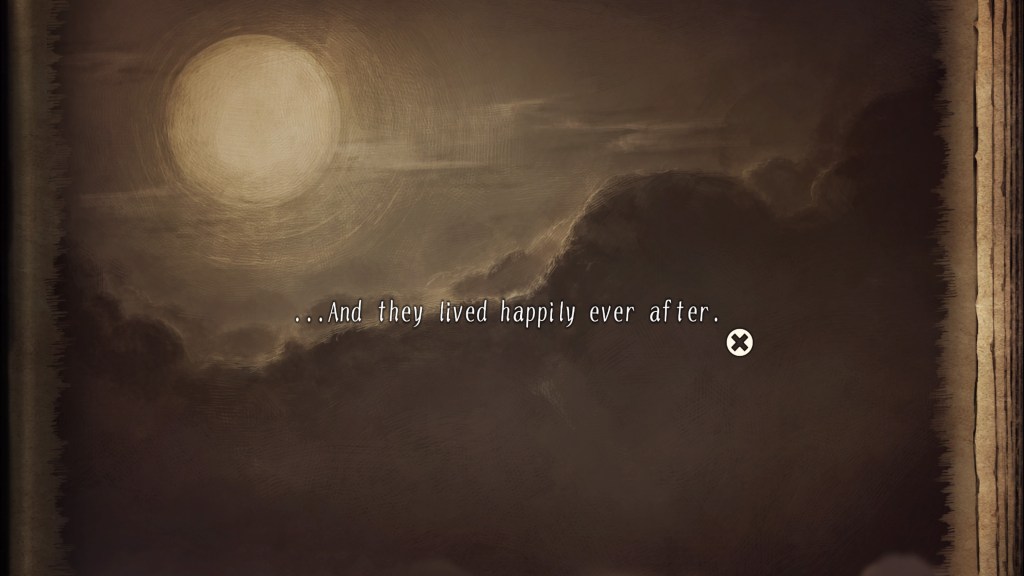

The game has a surprisingly dark story despite it’s cute aesthetic. There’s also a great chapter select that allows you to revisit any stage at any time to collect all of the petals/flowers and challenge trophies you may have missed, so it meets my completionist criteria. I’ve been playing a level or two each night after work and it’s just so relaxing to play. It’s apparently really short too, which is what I prefer these days. There’s an optional puzzle that completely blindsided me, though. Up to this point, I’ve figured out every puzzle on my own, but this one made me bust out my notebook (although the game does ultimately provide everything you need to know on the screen). I’m not sure if it’s due to the translation or what, but I just couldn’t wrap my head around this puzzle. When the first line of text read, “This is a collection of numbers.” I said to myself, “oh, no…”.
I really don’t like looking up puzzle solutions in games, especially when the majority of the game is about solving riddles or performing simple puzzle-platforming sequences. It feels like I’m doing the game a disservice by resorting to a guide, I don’t know. After banging my head against the wall, I decided to Google the puzzle to see if other people got stuck on it while also doing my best to avoid seeing the solution. I should have known better, but my wandering eyes failed me. As I quickly glossed over my Google results, the number sequence appeared and my proof-reading eyes couldn’t undo what I just saw. My heart sank a bit and I felt disappointed in myself that I looked up anything related to the puzzle so quickly, knowing very well the number would have been written out somewhere for my eyes to register. Fortunately, this puzzle isn’t required to finish the game. It’s an optional sequence to obtain one of the game’s collectables (which ultimately leads to the Platinum trophy, however). As a mid-30’s something, I just don’t have the patience (or time) for cryptic, potentially oddly translated riddles anymore, but sometimes I wish I could have the restraint to just let things stew for a bit.

A Space for the Unbound, developed by Mojiken, is a 2D adventure game that feels rooted in classic point ‘n click games. The game takes place during the 90s in Indonesia and follows the story of a young man and his high school girlfriend at the end of their high school days. The greatest thing about A Space for the Unbound is that it gives players a somewhat authentic peek into the lives, history and culture of those who lived in a country that doesn’t always get represented in media, especially when it comes to video games. While the game is a fictional tale told over the course of a 10 hour or so adventure, A Space for the Unbound feels like an extremely personal story that’s certainly relatable to just about anyone, especially to those who grew-up in a small neighborhood. The town in A Space for the Unbound is a quaint, compact place where everyone knows each other’s business. There’s an arcade, a café, a convenience store and a movie theatre, for example, and it’s all richly detailed with beautiful background art and most importantly, the areas feel lived-in.
The game itself follows the traditional point ‘n click formula (you’ll find yourself running back and forth between NPCs, solving fetch quests and the sort), but there’s quite a bit of gameplay variety thrown in for good measure. In one chapter, you’ll face off against town bullies on the streets, played out in quick-time events (QTEs). In another scenario, you’ll have to sneak by people without being seen, among other mini-games. A Space for the Unbound, at times, almost feels like one big sub-story from a Yakuza game. A big part of the game also has you completing a bucket list of tasks (which is also tied into the game’s narrative), most of which are necessary in order to make progress, but there are a handful that are optional (such as petting every animal in the game and collecting all of the bottle caps). Completing all of the bucket list tasks unlocks the true ending, but if you’re not a thorough player, good luck earning this achievement without a guide.




Unfortunately, you can miss a lot of the optional content and there is no chapter select or ways to revisit old areas once you progress too far into the story. I had to play the game twice in order to see the true ending and obtain the Platinum trophy, so the game doesn’t exactly respect your time when it comes to going for 100% completion. With that said, you can quickly advance the text and skip most cutscenes, so it only too me about 3 hours or so to rush through the game a second time. The fact that I felt compelled to replay the game again to see the best ending should also speak to its quality; A Space for the Unbound is really good.
End-Game Spoilers: I never thought my mathematical skills, or lack thereof, would come into question during my adulthood, let alone while playing a videogame, yet here we are. In Chapter 4, in order to make progress, you must solve a handful of mathematical equations/formulas. Whatever I learned in high school/college has completely failed me apparently. I’ve never felt more challenged in a game than solving the “basic algebra” that’s presented here. Dear reader, if I were to present to you the following four formulas and pictures, would you be able to solve this puzzle?
Your goal with the above formulas is to discover a number combination based on the outcome of those equations. Essentially, the word “NIKEN” needs to equal 49614. Can you solve this on your own? I could not and it was the only “puzzle” I had to look-up in order to finish the game. To say I was disappointed in myself would be an understatement! End-Game Spoilers End.


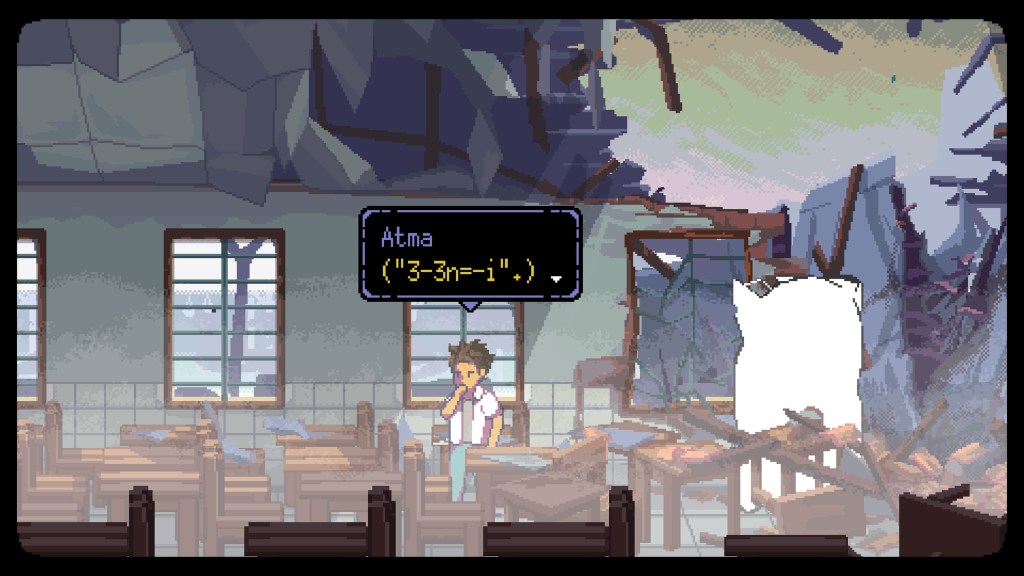

Hi-Fi RUSH, developed by Tango Gameworks, is a rhythm-based, character-action game that came out of nowhere. Announced and released during Xbox’s Developer_Direct in January of 2023, Hi-Fi RUSH delighted and surprised everyone on the internet (which seemed to only last a week or so in the zeitgeist). I don’t think I’ve ever experienced a moment like this in my entire 30+ years of gaming. While indie games release every day on platforms like Steam, we rarely ever get “big budget” releases like this from established studios/publishers, let alone on the same day they are announced! Tango Gameworks is also mostly known for horror games (The Evil Within and Ghostwire: Tokyo being some of their previous games), so Hi-Fi RUSH is quite the departure aesthetically/tonally.
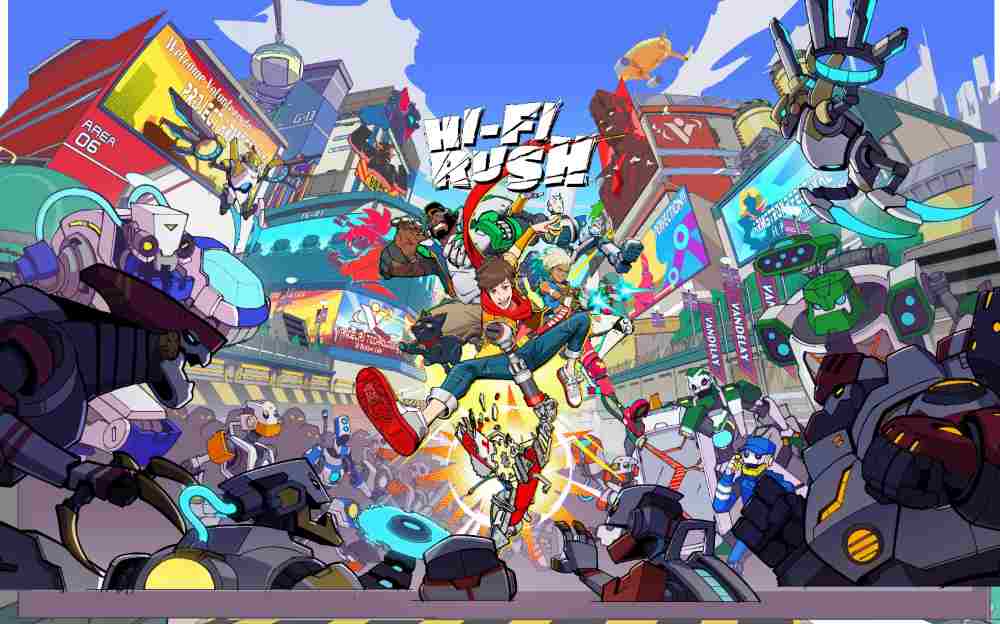
Hi-Fi RUSH is a character-action game through and through. Similar to Bayonetta’s “Verses”, Hi-Fi Rush’s battles take place during a “Chorus”; fixed enemy encounters that feel like encapsulated arenas where you’re ranked/scored on individual fights instead of the entire mission (like in Devil May Cry). It’s something Platinum Games figured out years ago, so I’m happy to see other developers incorporating this combat structure/flow. When defeating enemies, you’re rewarded a currency which can be used to purchase a variety of character upgrades and abilities. Over the course of the game, you will have allies join your cause who can also assist you during battle, almost like follow-up attacks from the Marvel Vs. Capcom fighting games. Every special ability in the game, including your ally attacks, are on cooldowns, which can also be upgraded to reduce their time. Each mission is also littered with collectables and after you beat the game, there’s even more to discover on subsequent playthroughs.



While its rhythm-based combat is supposed to be the game’s unique hook, you’re not required to attack on beat, which makes the game quite approachable (on top of offering various difficulty modes from the start). Timing your attacks can be quite tricky, but you’re never penalized for missing the beat. With that said, the game is almost begging the player to engage with its rhythmic antics. Everything in the game, including the character’s walk-cycle, enemy attacks, all of the objects in the environment and even the cutscenes react to the beat of the music. It’s the perfect marriage of gameplay and narrative. Hi-Fi RUSH reminds me of games like Viewtiful Joe (it must be the main character’s scarf), Comix Zone or the types of games we used to get from Smilebit back on the original Xbox. There’s a lot of undeniable Capcom/Platinum Games DNA here and I’m here for all of it.
I think my only major critique of Hi-Fi RUSH is that the environments sort of blur together and the level design is a bit straight forward. A lot of the environments lack distinct themes; the interior of Vandelay Technologies campus has the player exploring what feels like a bunch of employee-only sections of a warehouse. There’s a lot of pipes lining the walls, computer terminals in rooms and laser-ridden corridors, although there is a decent amount of platforming and verticality thrown in for good measure. The opening chapter or two and some of the final missions are quite spectacular-looking, however. I completed Hi-Fi RUSH on Very Hard difficulty, but there’s a lot of post-game content for those who want more. I liked the game so much that I bought it digitally despite the game being available on Game Pass. Hi-Fi RUSH will likely be forgotten as the year progresses, considering it was a January release, but I won’t be forgetting about it anytime soon.
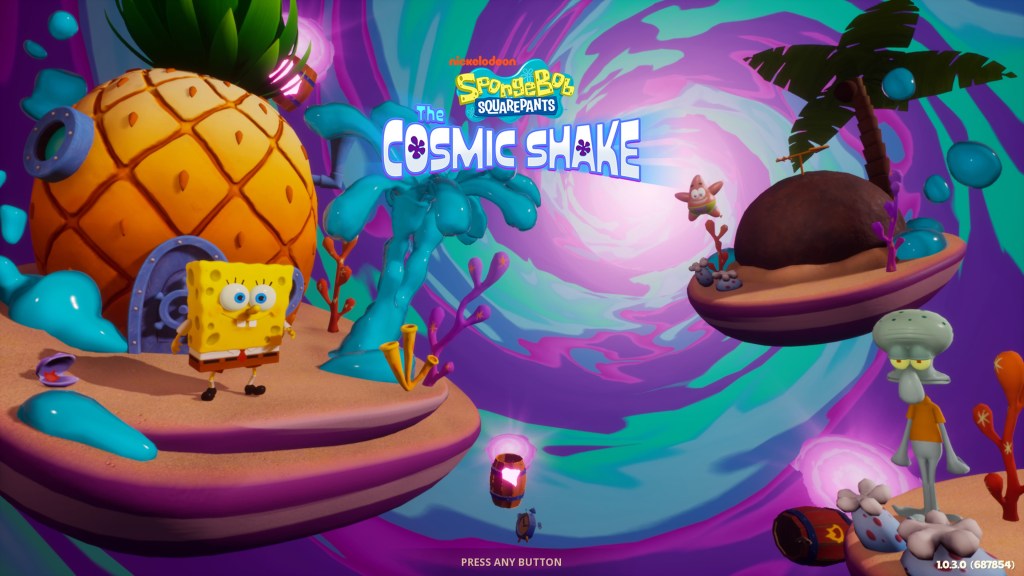
SpongeBob SquarePants: The Cosmic Shake, developed by Purple Lamp, feels like it could have existed on the PlayStation 2 (PS2) as a true successor to Battle for Bikini Bottom. Considering the relative success of the Rehydrated remake, I suppose it makes sense to greenlight a brand new game starring SpongeBob and friends. I’ve yet to watch a single episode of SpongeBob, so I’ve only experienced these characters through the games. I can’t say any of the jokes/writing landed for me, but I’m also not the target audience. As the title suggests, The Cosmic Shake is a time-travelling adventure that takes characters from the show and places them in particular periods of time such as the Medieval or Prehistoric times. Each time period is comprised of simple platforming and combat sequences. The levels can appear to be very linear at times, although they do become quite expansive. You can unlock fast travel clams and backtrack to old areas when you acquire new abilities, too. SpongeBob gets a new skin/costume for each time period, but they’re purely cosmetic.
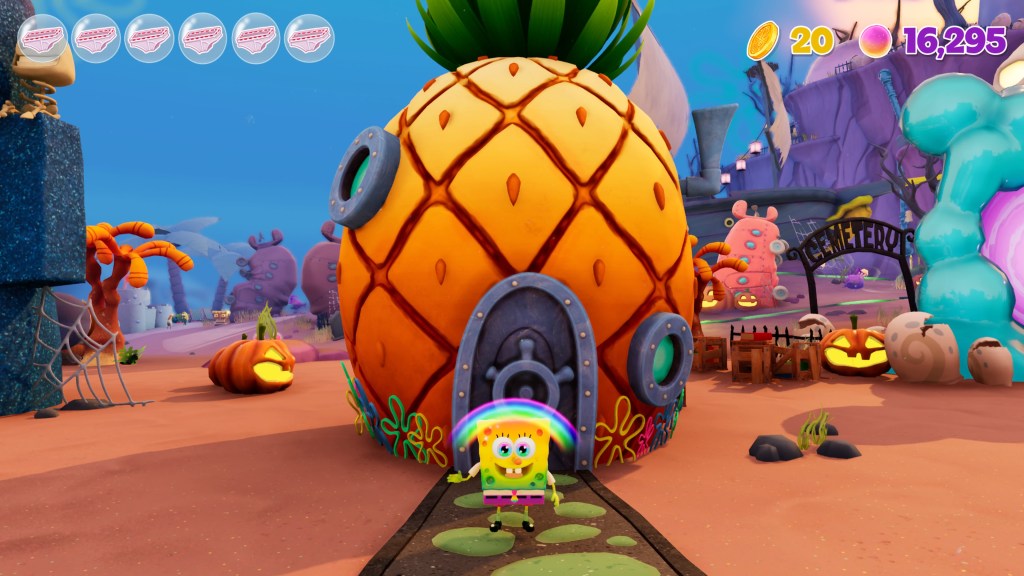
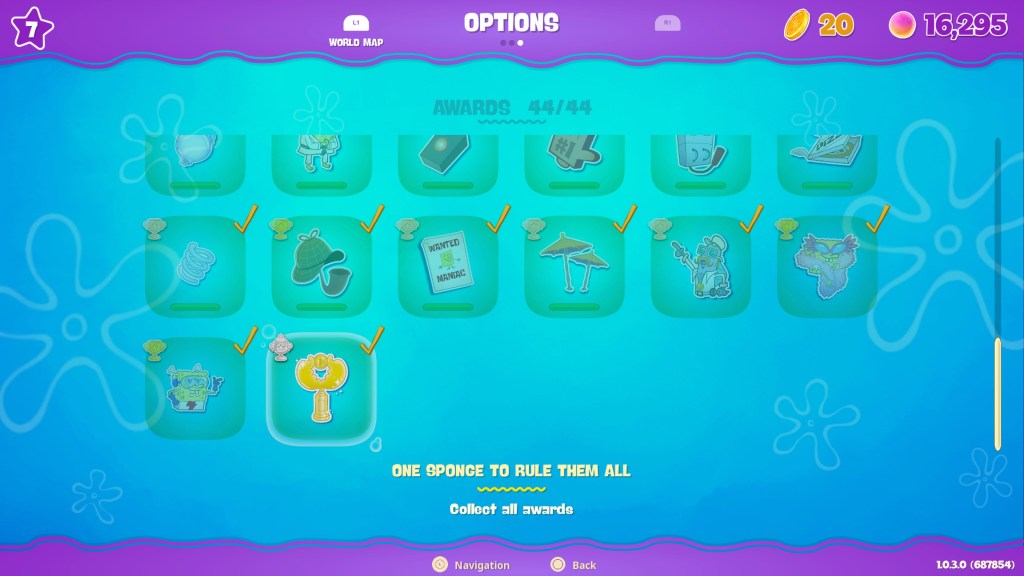

New traversal abilities, such as a grappling hook, are granted to the player at specific points while exploring each world, which I found odd as I assumed they would have been tied to the world’s respective skin/costume. Most of the abilities you earn can only be used at fixed points in the level, which I found disappointing. The Cosmic Shake is also a relatively big game; there’s post-game content which essentially asks the player to revisit each world a second time to collect even more goodies. If you’re going for 100% completion, the game asks a lot of the player, including beating most of the bosses without taking damage. The Cosmic Shake doesn’t do anything new, but it’s a comforting, competent 3D platformer for fans of the show and genre alike. I completed the game at 100% with the Platinum trophy earned. I don’t think I’ll ever watch a single episode of SpongeBob but until more 3D platformers come out, a decent licensed game based on the yellow sponge will have to do for now. The game did inspire me to write a more creative piece (which you can read here).

NeverAwake, developed by Neotro Inc., is a twin-stick arcade shooter about a young girl from a troubled family who’s fallen into a coma. While she sleeps, the things and people she dislikes from the real world manifests as nightmares she must face in her dreams. The girl in the coma dislikes vegetables (as most kids would), so the first world has you encountering nightmarish amalgamations of carrots, broccoli and other veggies. In another world, the girl had an encounter or two while awake with a mean dog, so the boss is a monstrous Pit Bull. The story is told through unlockable text files and storybook images, which can be unlocked after completing bonus objectives after you beat the game. There’s a nice visual progression on the state select screen; when you complete a world, the hearts shackling the girl break and when they’re all gone, the girl is essentially set “free”. There’s multiple endings and a true final boss if you want to get the most out of the game, but it’s a fairly approachable shoot ’em up that doesn’t overstay its welcome, all things considered.
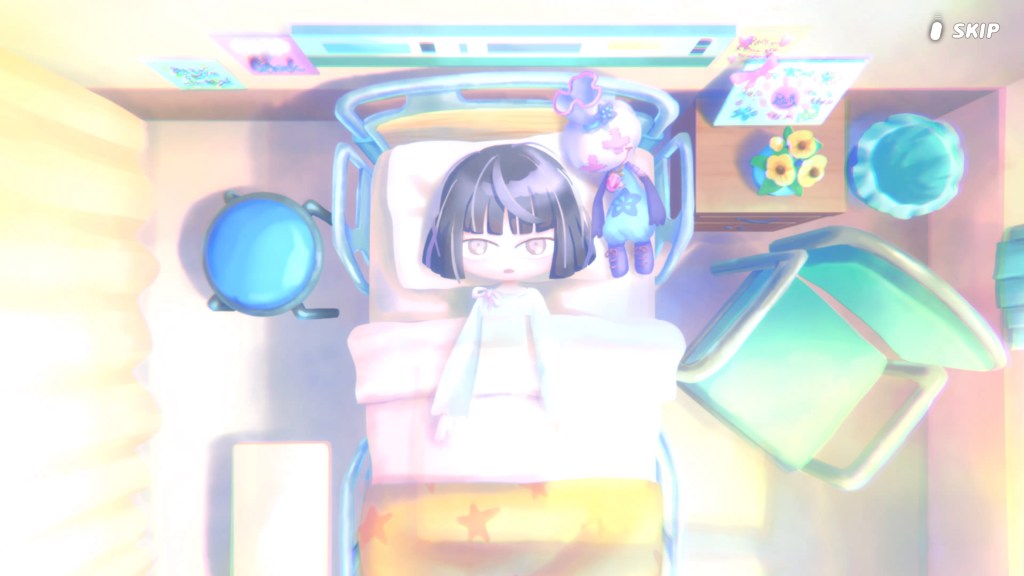
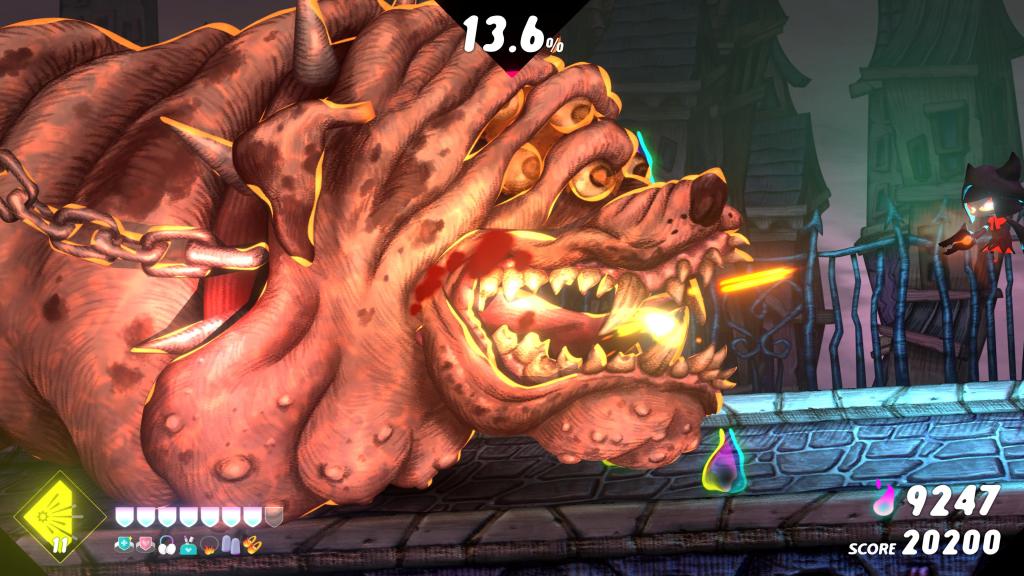

A lot of old arcade shooters loop after you beat the game, which means the game essentially starts over after you beat the final boss and it keeps going until you lose all of your credits. What’s interesting about NeverAwake, however, is that this traditional “looping” mechanic is sort of built into each individual stage. The level essentially loops over and over again until you collect enough souls from enemies. You can keep the stage going indefinitely if you avoid the souls, which sort of provides bite-sized risk/reward situations for every stage. There’s even accessories which reduce the amount of souls enemies drop for those who want to loop stages over and over again. There’s a plethora of accessories and weapon upgrades you can purchase to suit your playstyle, such as more health or even barriers that can surround and protect your character from harm. I finished the game twice and saw both endings, but there’s still more things to unlock after you beat the game.

Dead Space (Remake), developed by EA’s Motive Studio, is a beautiful remake of the 2008 survival-horror game originally made by Visceral Games. In a now post-Resident Evil 2 remake world, Dead Space 2023 had a lot to live up to. Not only have a lot of the key developers from the original release move on to a new project/studio (see The Callisto Protocol above), the series had previously lost its way with the heavily criticized Dead Space 3, similar to the fate Resident Evil shared prior to the success of Resident Evil VII. I would be remiss if I didn’t mention that the remake was also going up against the highly anticipated Resident Evil 4 remake a few months later. Prior to the game’s release, I was more excited about The Callisto Protocol than I was at the thought of revisiting Dead Space, but now that I’ve played both games, I much prefer the metallic walls and corridors of the USG Ishimura than the boring prison complex found in the aforementioned mess of a game.
I haven’t revisited the first Dead Space game since the PS3/Xbox 360 era, but the story seems mostly the same; a distress signal has been sent from a planet-cracking space ship. The player takes on the role of Isaac, an engineer who’s accompanied by a small crew to inspect the now abandoned ship. There’s some new side quests to flesh-out the characters and setting a bit more and most of the boss encounters have been re-worked to a degree. What’s most exciting/interesting about the remake is that the ship is now fully interconnected, more Metroid-like than even the original release already was. While both the original release and remake are still chapter-based and utilize a tram car to connect the different areas of the ship, the remake’s USG Ishimura has essentially eliminated (or masked) the load times to a staggering degree. It still feels great to shoot off monster limbs, too. The weapons provide great, visceral feedback and stomping on enemies feels just as crunchy and satisfying as it’s always been.
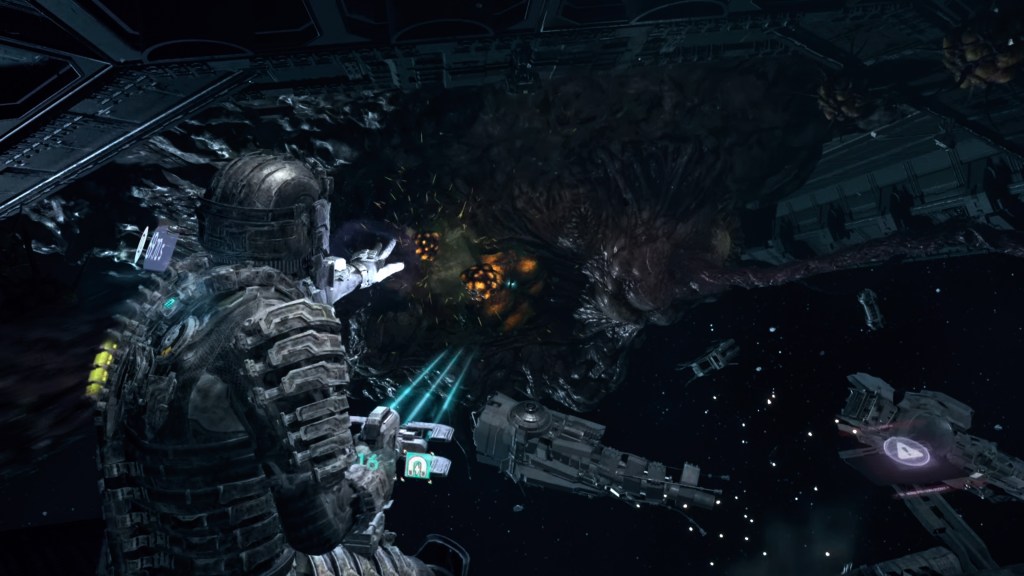
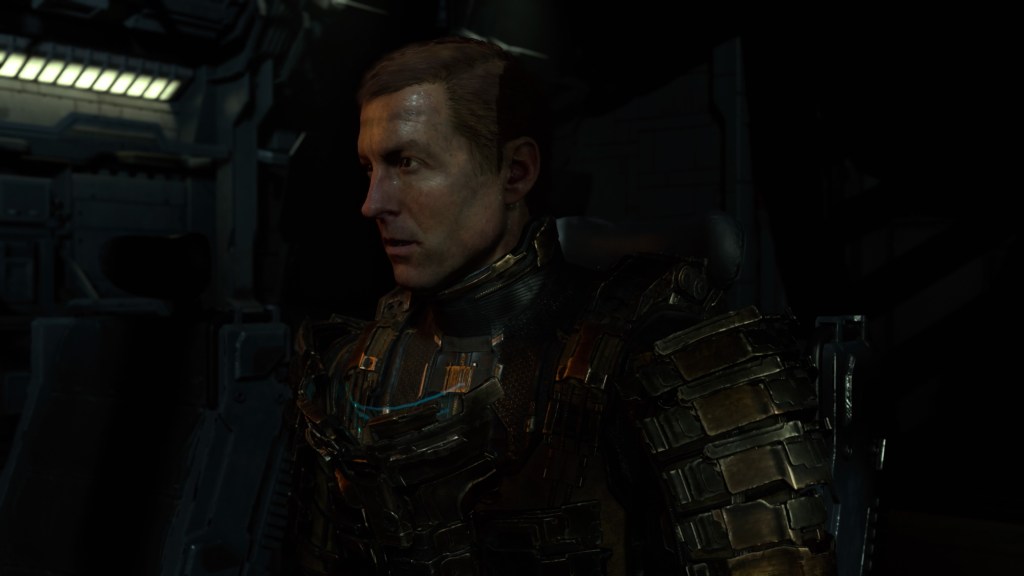

I completed the game on Hard difficulty with all side quests completed, but I only used the Plasma Cutter so I could unlock the “One Gun” trophy. I did this playthrough back in the original release, but I attempted it on a subsequent playthrough previously. This time around, for whatever reason, I wanted to do this challenge playthrough right out of the gate with the remake and while it was certainly difficult at times, the game is more or less balanced around using a single weapon. What enemies drop and the items you find in supply crates are dictated by the weapons you’re using. I believe the original release worked like this too, but if you’re only expending one type of ammo, you’ll be replenished with that same resource when defeating enemies or breaking crates, for example. It’s unlikely that new players experiencing Dead Space for the first time would play the game like this, but I always appreciated how the game rebalances the resources you receive based on how you’re playing. I really hope Dead Space 2 gets remade with the same love & care found here.
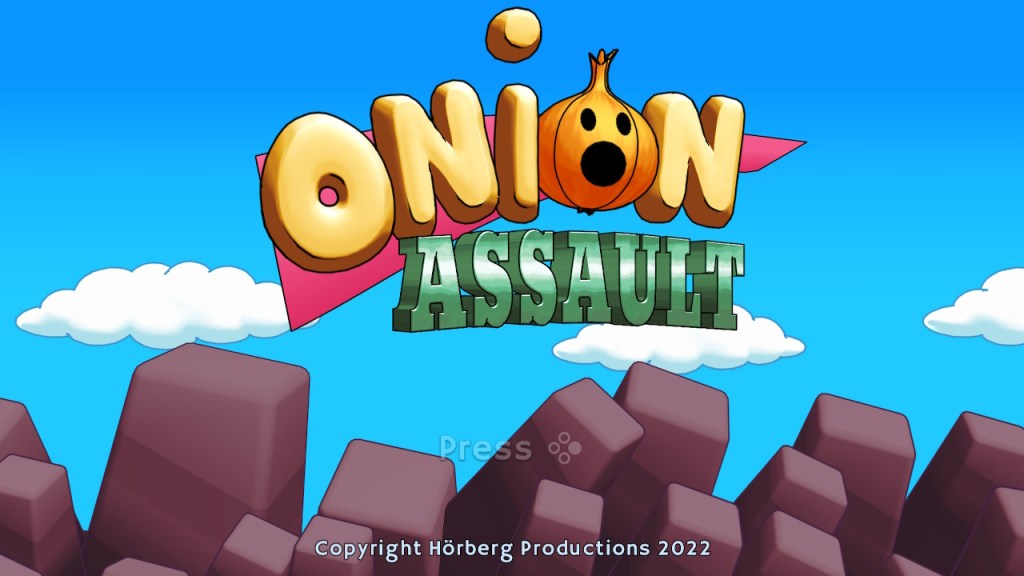
Onion Assault, developed by Hörberg Productions, is a 2D action-platformer that wears its Super Mario Bros. 2 inspiration on its sleeve. Onion Assault is a very simple game. Your character can run, jump and pick-up enemies. Just like in SMB2, you can jump on enemies and use them to damage other enemies or as platforms to reach new heights. The controls can feel a bit too floaty at times, but checkpoints are mostly forgiving if you find yourself jumping into the occasional pit by mistake. Onion Assault also feels like the culmination of some of the developers most recent games. The bosses, for example, feel like they’re from Mechstermination Force, but structurally it feels more aligned to Gunman Clive. It feels super satisfying to jump on top of a big mechanical tank, pick it up by its roof and toss it like you’re in a strongman competition.
I’m not particularly thrilled about the flow of the stages, however. It feels like a bunch of random levels thematically strung together with little to no vision. There’s grasslands, snowfields and pumpkin patched-themed levels, but you’ll find these backgrounds mixed together throughout the game’s three islands. I would have much preferred a world that was entirely focused on the snow, for example, as it does incorporate some interesting mechanics where you can pick up snowballs and form mounds of snow to reach platforms that are out of reach. There’s some decent ideas here, but I wish it all felt more cohesive. The levels are short & sweet and never overstay their welcome, which is always appreciated. If there’s one thing I continue to dislike about 2D platformers is when the levels are way too long and thankfully, this game avoids that pitfall.



Each level has three hidden coins to collect and some of them are surprisingly difficult to find. In some instances, you have to defeat a special enemy or trigger a secret somewhere in the level to collect some of the coins. Unfortunately, I don’t think they unlock anything beyond increasing your overall game completion percentage. The music is just okay, too. The OST sounds similar to the developer’s other games. I completed the game at 100% after about an hour and a half, so it’s not a very long game, but I enjoyed it for what it was worth. It’s probably my favorite game from the developer (next to Mechstermination Force and Gunman Clive). I hope the developer keeps making more games as they’re always a good time albeit short-lived.
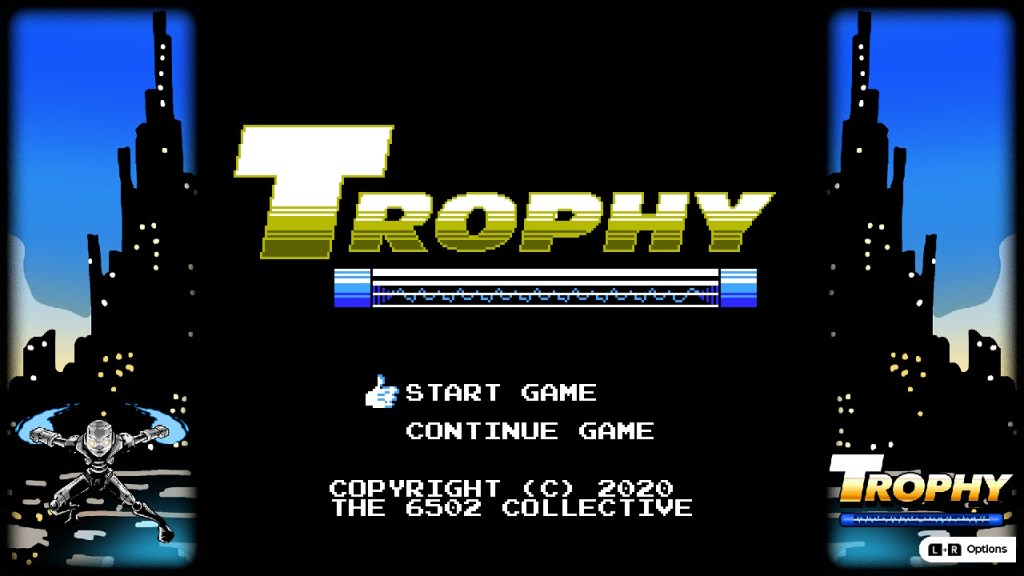
Trophy, developed by Gradual Games, is a Homebrew NES game that clearly wants to be Mega Man (MM). I’m not too familiar with the Homebrew scene, so I can’t speak to how the game was made, but it’s clearly using the blue bomber’s template. The game starts with a 20XX-style text scroll which attempts to explain the story. The story/setup isn’t as compelling as facing off against a bunch of Robot Masters, but an attempt was made to at least differentiate itself from the games its clearly inspired by. There’s essentially a robot planet that has gone mad due to an evil man’s ambitions and it’s your job, as a human who merged with a robot from said planet, to put an end to their madness. There are 8 levels at your disposal and you can complete them in any order. Unfortunately, when you defeat a boss, you do not gain new powers to help you defeat the other bosses, so it doesn’t matter how you tackle them.
My biggest issue with the story/setup is that the robots you face aren’t particularly interesting and I don’t know what their threat is beyond having gone haywire. The narrative in “retro” games from this generation wasn’t as important back then, so it’s not really expected to be anything more than it is here, but it’s still missing something. In MM, most of the robot masters provide some form of community service. The conceit of MM is that both robots and humans can live together cohesively and the robots that are made are supposed to make society better (like a wood-cutting robot that can cut down trees for resources). In Trophy, it just seems like a bunch of random ideas thrown together without a larger, more cohesive vision (doesn’t that sound familiar?).

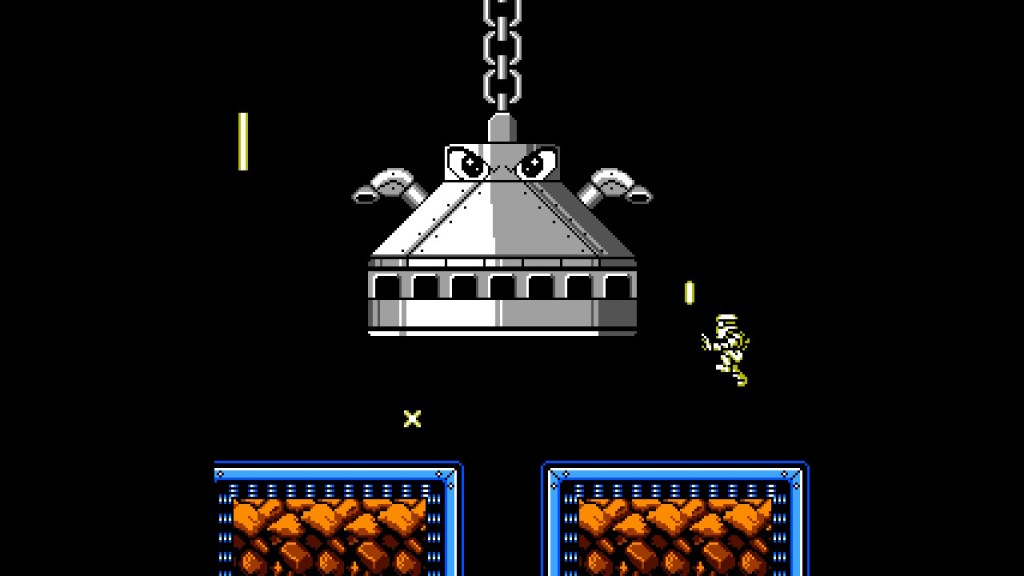
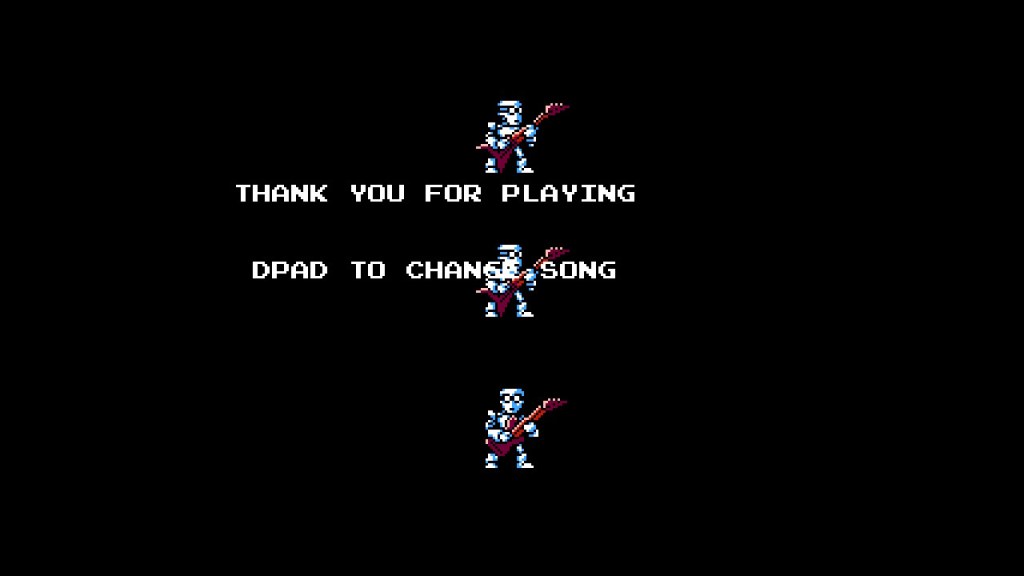
Trophy can be a challenging game at times, considering the legacy it’s pulling from, but it’s a mostly forgiving retro experience. Levels aren’t too long, but some of the bosses can be extremely frustrating, including the final boss. The last fight was so infuriating, I actually had to use an old technique, one that I’ve unofficially coined as the “pause trick”. The projectiles from the final boss are so hard to avoid, but if you pause the game, you can see where they are generally falling from, which gives you just enough time to move out of the way. Some may think that this is a form of “cheating”, but it’s more of an in-game exploit for those who grew-up with older games. A handful of the levels hold secrets too, such as maximum health upgrades and items that can increase your normal attack power. As far as I know, I completed the game with everything collected. I can’t say I ultimately enjoyed my time with Trophy, but I didn’t hate it.

Season: A letter to the future, developed by Scavengers Studio, is a story-driven, walk-and-record of sorts. It’s a narratively-driven adventure game where you explore a world that treats the weight/burden of memories as if it were a disease. At the start of the game, you set out from your home after performing a ritual with your mother. The game begins by having you take pictures and sound recordings of the town you grew-up in. Scrapbooking is one of the game’s main mechanics. Every picture and recording you take can be placed into your scrapbook. You can rotate/resize everything you put into the scrapbook, so there’s a degree of customization/personalization. Furthermore, you can unlock decals/stamps based on how many items you add to each page of the scrapbook. Shortly after the introduction area, you acquire a bicycle which is what you’ll mostly be using to navigate the game’s (few) environments. Riding your bike around is probably one of the most satisfying things to do in the game; peddling up hills and feeling the resistance from the triggers on the DualSense feels great and the cell-shaded/watercolor-look of the game makes for some beautiful rides along the countryside.
Season has a really interesting worldview, one that feels familiar yet foreign at the same time. One of the game’s main mechanics is that you have the ability to record the sounds of the world, in addition to the scrapbooking feature. If you’re a fan of proximity sound design, then Season is the game for you. Get close to a source of water, like a waterfall, bust out your microphone and fall asleep to the sounds of rushing water. There’s a bunch of unique things to record in the world of Season and almost all of it is extremely interesting. There’s a sense of dread throughout the whole experience, but one that’s also filled with hope. The game is also quite linear at the start, but it eventually opens up into a larger environment that you can tackle at your own pace. Season is the type of game where what you put into it is what you get out of it. Right out of the gate, you can more or less ride your bike from the start of the game to the end, but you’ll be missing a lot of what the game has to offer.
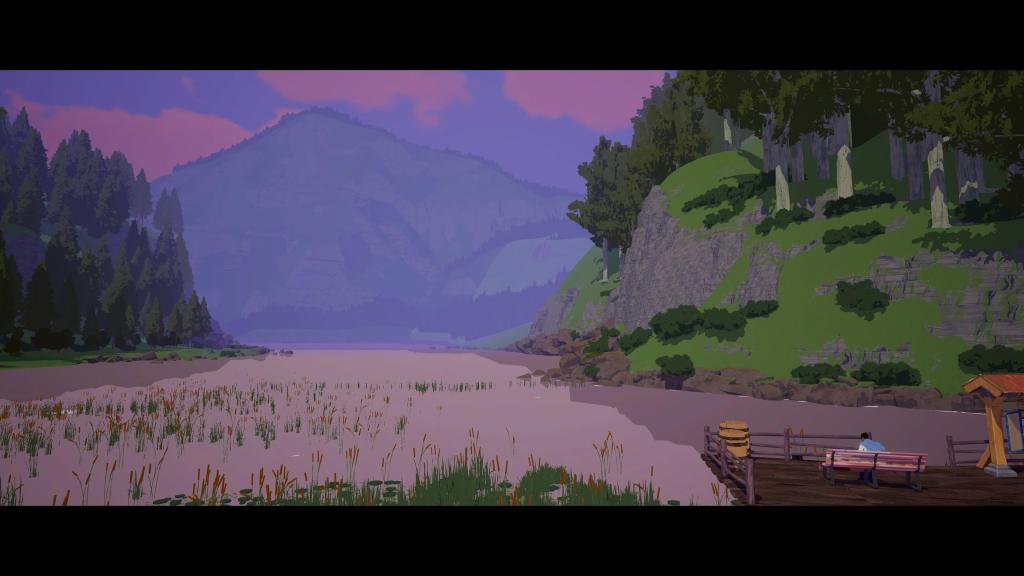


If anything, Season made me think about my own life and career. I’ve been working at a hedge fund services company for over 10 years now as a financial reporter. My job has a “busy season” of sorts where we’re required to work 6 days a week, 10 hour days for about 3-4 months out of the year (tax season). Because a lot of my work is centered around each quarter of the year, I’ve sort of applied that framework to my main hobby/passion (gaming), but I digress. Turnover/burnout is frequent in my line of work and a lot of what we do relies on having particular knowledge that can only be built over time. “Passing the torch” to new workers is essential for sustainability, but in reality, it’s not happening as quickly as it should. Similar to the people from the world in Season, I have a burden of knowledge that needs to be “set free” or at the very least, passed to someone who hasn’t “put in the time yet”, so to speak.
Also, on a less serious note, why is the title of the game displayed differently on the game’s official Twitter page, PlayStation’s blog, and on the official PSN platform where you download the game from the store? On PS5, when you hover over the game’s application, it’s just called “Season”, yet the subtitle is there in the logo? Should there be a colon after “SEASON”? Should it be uppercase or lowercase!? The inconsistent display of a game’s title drives me up the wall. I completed the game with 100% of the trophies earned, but after you beat the game, you can no longer resume your playthrough. When you go to load your data, the ending sequence automatically triggers and you can’t even access your scrapbook. I wanted to have the opportunity to mess around with my scrapbook after I beat the game, but perhaps not having access to my records fits the game’s narrative. I’d recommend Season to those who enjoy narratively-driven games (like Journey), but it’s sort of a one & done experience and it’s one I won’t forget about anytime soon.

Wanted: Dead, developed by Soleil, is one of the wildest games I’ve played so far in 2023 and it’s left me with one burning question, “How Did This Get Made?”. I feel like I’ve been saying this a lot lately, but Wanted: Dead maxes out the “this game feels like a PS2 era game but in actuality, it’s a lost PS3/Xbox 360 title” meter almost instantly within the first hour of gameplay. Even if you ignore the campy (and sometimes very questionable) dialogue and SWERY-isms where you question whether or not if the game is supposed to be “so intentionally bad that it’s good”; Wanted: Dead carries a very particular torch from a less-talked about corner of the Japanese PS2 era action game library. Games like Konami’s Cy Girls or even Namco’s Death By Degrees starring Nina Williams come to mind. If you want to jump a generation ahead on the PS3/Xbox 360, Square Enix’s MindJack or Konami’s NeverDead start to creep out from behind the recesses of your mind and you begin to question your sanity and ask yourself, “Did I really play those games?”. Yes, you did. Fast forward to 2023 and as I insert the physical disk of Wanted: Dead into my PS5 (because I’m that guy), I’ve somehow traveled back in time and find myself at my local game store picking-up my pre-orders of Bujingai: The Forsaken City and Galerians: Ash for the PS2. Good times.
Wanted: Dead, developed by Soleil, is a cover-based third-person shooter with character-action game elements. To be somewhat reductive, it’s like WinBack or Kill Switch, but with swords. The “back of the box”, so to speak, claims that it’s from the developers of Ninja Gaiden and Dead or Alive, but I think the missing key word here is “former”? The developer is recently known for the already-forgotten VALKYRIE ELYSIUM and Samurai Jack: Battle Through Time. Wanted: Dead is perhaps their first original IP. If any of the aforementioned games provide a peculiar sense of nostalgia or masochistic comfort, then woof, I have a game for you.


Wanted: Dead isn’t great, but I also couldn’t help myself from indulging in all of its quirkiness and inherent “badness”. You take on the role of a “Suicide Squad” of sorts, former inmates who were given a second chance to prove their worth. From what I can gather, you’re an infiltration unit for the police when shit hits the fan. It feels like a really bad take on what Ryu Ga Gotoku Studio attempted to do with Binary Domain (one of my favorite games of all time) but as ridiculous as it is, you’re not really here for the story. Wanted: Dead is a fairly linear shooter with missions essentially being compromised of corridors and larger arenas filled with what feels like, at times, endless enemy spawns. There’s a skill tree where you can unlock combo extenders, additional parry techniques and the sort and it’s the type of game that “feels” better when you unlock more abilities.
The game’s also very challenging, even on Normal difficulty, with somewhat brutal checkpoints and frustrating boss encounters. The highest difficulty is titled “Japanese Hard”, which I found somewhat humorous; perhaps a nod to how some older games used to be more difficult prior to being localized for the west, but who knows. The thing that really stood out to me about Wanted: Dead, however, is the intermission of sorts where you explore a police headquarters between missions. The police station is littered with collectables (which attempt to provide some world-building), training tutorials, target practice and other distractions, like a handful of wannabe Yakuza-like mini-games including karaoke, UFO catchers, and even a 2D side-scrolling shoot ’em up! As soon as you’re introduced to these side excursions, they can also be accessed from the main menu, which is appreciated.


Perhaps the wildest thing about the police station, however, is the vibe of the location; the look of the NPCs, what they have to say, and some of the background art/assets placed around each room. The NPCs strutting around the station look and sound like the townspeople from Sonic ’06 and it’s amazing. At times, it feels like I’m playing an old 3D Realms game like Max Payne with its generic soda machine labels and photoshopped pictures of cheeseburgers and Pringles-like cans of chips hanging out in the break room. There’s a distinct PC style western game influence sort of bleeding out around the edges of the police station and it creates a really interesting juxtaposition against the rest of the game. I like it. I completed the game on Normal mode and it was extremely difficult, especially the last stage. I consider myself a fairly competent player when it comes to character-action games in general, but Wanted: Dead is something else. There’s a bunch of collectables I missed on my initial playthrough and harder difficulties to attempt after you beat the game, but I think I’m good. I’ve got to go now, though. GameStop called and my copy of Firefighter F.D.18 arrived at the store so there’s no time like the present.
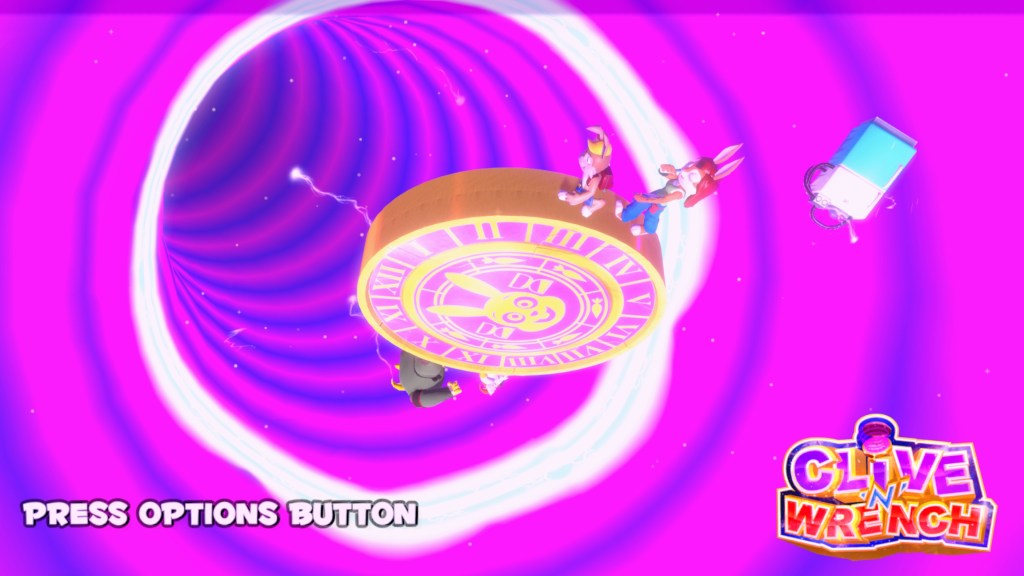
Clive ‘N’ Wrench, developed by Dinosaur Bytes Studio, is a 3D platformer that wears its love for games like Super Mario 64 (SM64), Banjo-Kazooie (B-K) and Jak & Daxter (J&D) on its sleeve. Clive and Wrench are a bunny and monkey, respectively, who team-up together to stop an evil scientist from changing history (presumably for the worst). Your sister creates a makeshift refrigerator that acts as a time machine, which allows Clive and Wrench to travel through various periods of time. The story is confusing and outside of the introductory scene, there’s not a whole lot of exposition, but it’s not exactly what you’re here for. Clive ‘N’ Wrench is a collect-a-thon through and through. There’s thousands of pocket-watches to collect in each world (which animate and carry different values based on their colors), just like the gems found in the Spyro the Dragon series. Similar to J&D and B-K, each world is objective-based, which means you can collect the game’s main collectable, Ancient Stones, in any order you see fit. A lot of the Ancient Stones are found out in the open, tucked-away in hard to reach spots, at the end of tricky platforming sequences or given as a reward for solving simple puzzles, for example. Each world also has a set amount of animals to rescue that grant the player with an Ancient Stone once they’re all set free, similar to the Jinjos from B-K.
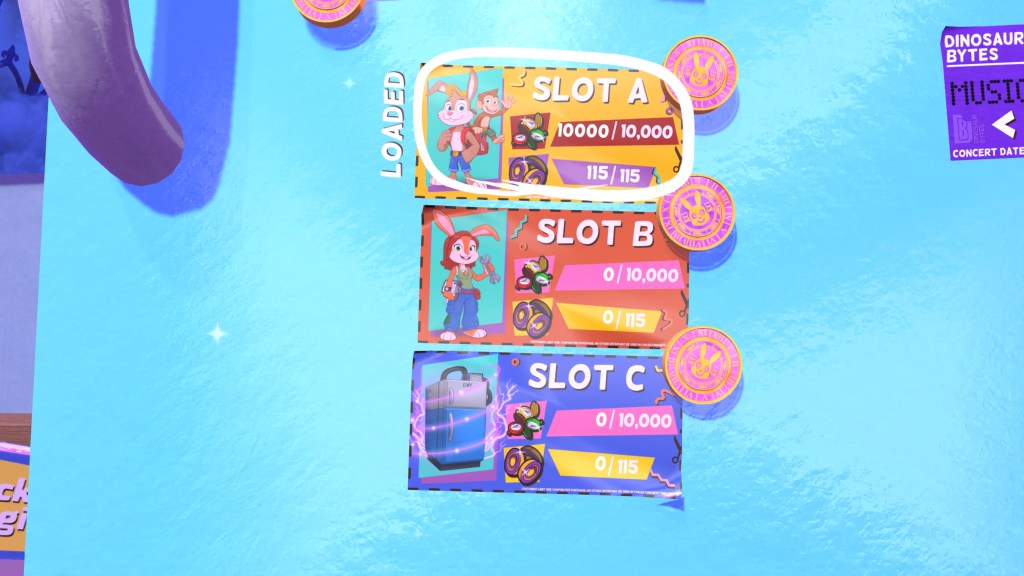
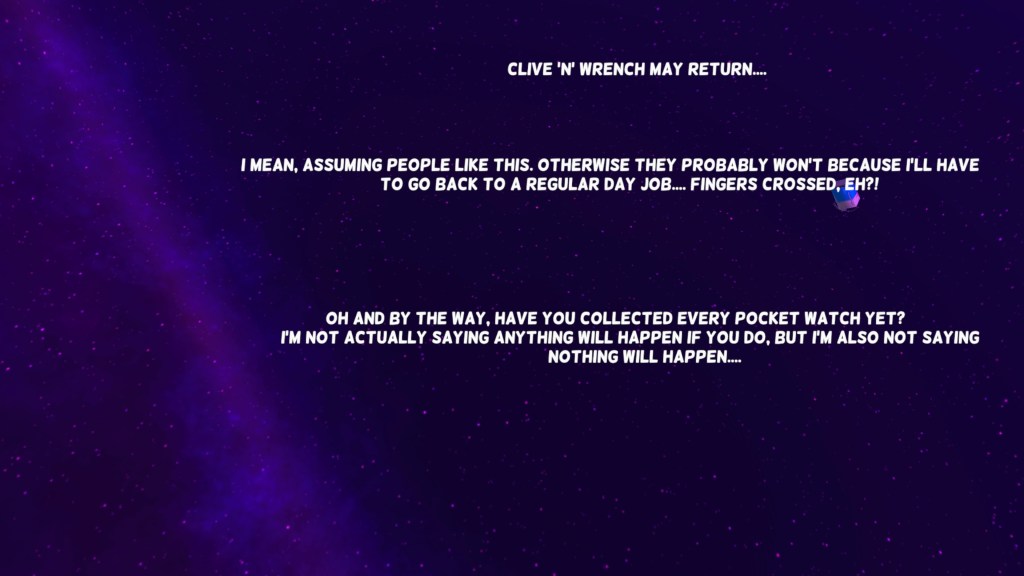
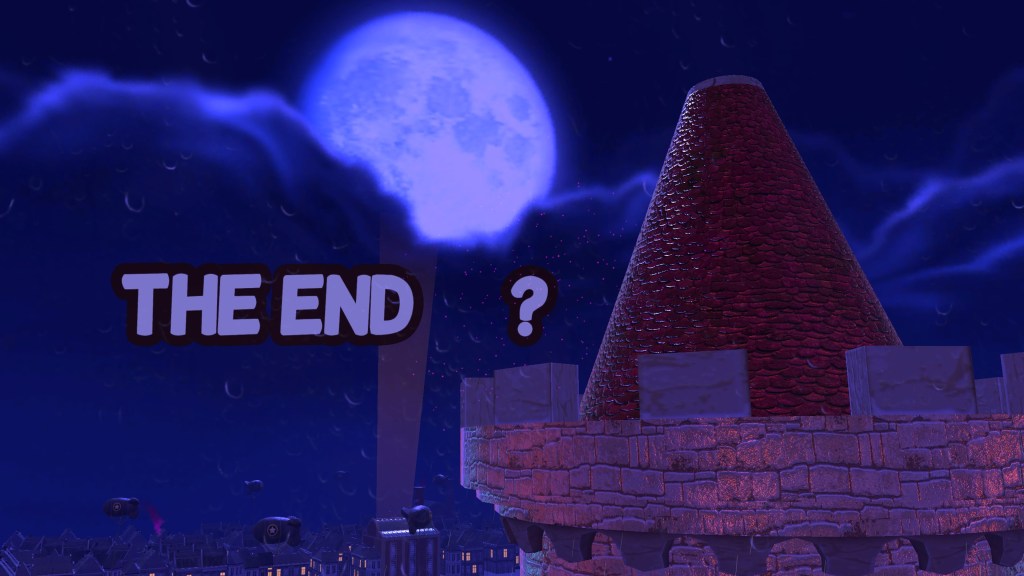
The worlds are fairly compact yet concise and while some levels are larger than others, you don’t spend a lot of time in each area. Collecting everything a world has to offer is made even easier with a button you can press that will point you in the direction of any missing pocket-watches (the game’s more elusive collectable). A lot of objectives are repeated throughout the game and while each world culminates in a boss encounter, they’re usually more frustrating than fun (especially if you’re going for some of the more challenging no-damage trophies). Clive’s move-set is fairly robust too, although the game doesn’t ask the player to utilize all of the abilities at your disposal to complete the objectives. Most importantly, it just feels good to run around and control Clive. You can perform long jumps, butt-stomps, and even the sideways flip from SM64. I completed the game at 100% with the Platinum trophy earned. I love 3D platformers and while Clive ‘N’ Wrench is a little rough around the edges, it’s clearly a love-letter to the genre. The game was apparently in development for a very long time (and made mostly by one person). There’s a message from the developer after the credits roll thanking everyone for their support, so here’s hoping we see a sequel sooner rather than later.

Until next quarter…
-Matty
3 Comments »